The taste of fresh cacao is unforgettable. It punches you in the mouth with a deep, honey sweet flavor that resembles a mango more than a chocolate bar. The brightness quickly turns sour, however, with the bite of acid that reminds you how fruity chocolates get their edge. Cacao fruit's flavor is fleeting, too, as the juice begins to ferment as soon as it's cut off from the tree.

Why Visit a Cocoa Plantation
The further you go from the farm, the less pungent the flavor becomes, eventually drying up until it's nothing like its former self. Therein lies one of the many reasons to visit a cacao farm.
Visiting a cocoa plantation (also known as a farm, finca, hacienda, or any number of other names depending on the country) is an experience like no other, and just as the varying names suggest, the experience is different on each one. So even if you can get your hands on some cacao juice or cacao liquor, it's never quite the same as sucking the pulp straight off of a freshly-broken pod.
What makes a cocoa plantation special is the way it takes chocolate out of the context of a supermarket, and back to its origins. A bar of chocolate goes from an item on your shopping list to a living product of hard work. All the antioxidants and flavors that you find in chocolate have their origin on a cocoa plantation somewhere in the world. In the case of some of my favorite chocolates, this unique origin is Vietnam, specifically in the southern half of the country.
Not many cocoa plantations in Asia have any sort of tour or education program, but lucky for us, at least one does. Azzan Chocolate, based in Buon Ma Thuot, Vietnam, has recently started offering tours of its stunning plantation & its nearby fermentary. So let's see what a tour entails. Note that as of publication, tours are only offered in Vietnamese, Japanese, and English, and by appointment only.
Arriving at the Cocoa Plantation
Vui.
It's the first Vietnamese word I asked for after arriving at the farm. The owner doesn't speak much English, so I wanted to express my reaction in his own language. Vui means happy. It's the word that goes along with the feeling you get when you see the abundant greenery working in your favor, the cacao trees lining the path and the mango trees neighboring the house on Azzan's plantation. You immediately forget about the half hour it took to arrive from the city.
In May, the organic fields are pulsing with all the effervescent green butterflies that happen to emerge in late spring. Puppies are crawling around and lounging under the bridge; depending on how long you decide to spend there, you may just get to meet some of them. Once you have the chance to walk around for a few minutes, you'll be amazed at the variety of flora planted all around the farm.
A rainbow of flowers lines each young field, a new type of tree or bush being planted each month, just trying to keep up with the owner's imagination.
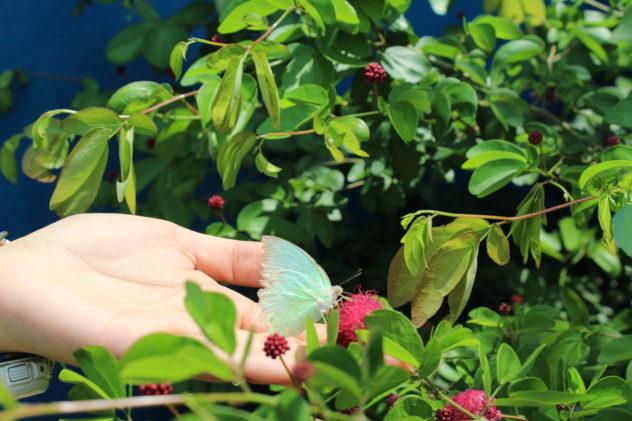
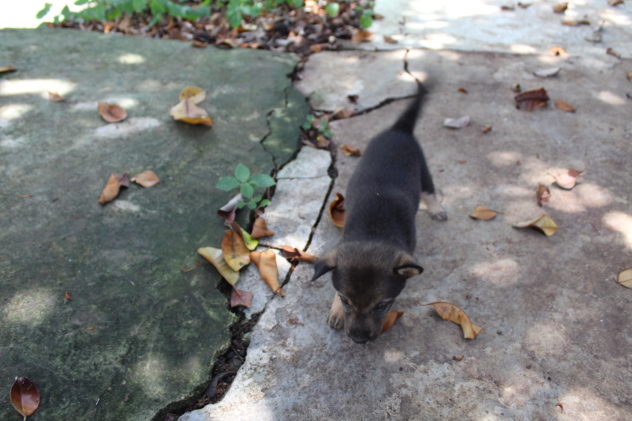

Tree to Bar Chocolate in Vietnam
Tung, the owner of the farm, has a passion for the land and its people. His operation originally began with only coffee and small amounts of local fruits. Now he keeps as many fruit species as you can name in a dozen breaths, and as the good reputation of his coffee spread across Vietnam, he began looking into how he could give back to the community while expanding his business. Over the last two years, his farm has seen the addition of 1000 cacao trees from 11 different varietals. Adding these to the original 1000 coffee trees, he has quite the land mass working for him!
But since his trees are so young and Tung and his business partners wanted to start learning how to make chocolate right away, they've been supplementing the meager amount of beans they get from their own young trees with cacao from a community of farmers nearby. With the help of a community matriarch, they collect cacao on regular intervals and ferment all the beans in their centralized fermentary. They've been collecting so many beans that they're even selling them to some other makers around Asia.
If you visit, you'll also have the pleasure of traveling out to the collection site for their cacao, and the much older cocoa plantation surrounding it. Whether you go by boat or by car will be up to the weather gods & the capricious rainy season. High season for cacao collection is in May and December.
As for their tree to bar chocolate business, all of the chocolate making happens off the farm and in the city. Just meters away from their cafe lies their chocolate factory; if you're lucky, the door will be open when you visit. Be sure to pick up a few bars from the cafe, either way, as the gorgeous packaging makes for a lovely Vietnamese chocolate gift. To top it all off, Tung himself designs the packaging.
Tasting the Fruits of Our Labor
The choices he's made with his business are ones most entrepreneurs would brag about in all their literature. For every can of ground coffee they sell, five thousand dong (about $0.25) is donated to Operation Smile. Tung also donates 5% of the business's profits to the education of ethnic minority children, specifically the children of the cacao farmers he works with. He himself doesn't speak much English, and I got the sense that he'd have never personally revealed this, but my friend could not stop bragging about Tung's choices for his business. It's not that he's running a charity or a social entrepreneurship venture— it's just how he is. It's his personal belief that if he has wealth, he should share it.
There are few things I admire more in a person than concerted selflessness towards others. Yet this isn't just a facet of himself that he saves for the business. During my visit, in which all he knew about me was that I'd traveled from Korea to visit his farm, he couldn't seem to stop doing this for me. He was so proud of his farm that he was like a kid showing off the garden he'd planted himself, just as the tomatoes were starting to show. One minute he was pointing out the different varieties of cacao, and the next he was poking at a mango tree with the longest stick you've ever seen, unbeknownst to me, catching ripe mangoes.
In less than a minute, he was climbing the next tree to collect jam fruits, and was rolling them down, beaming all the while.
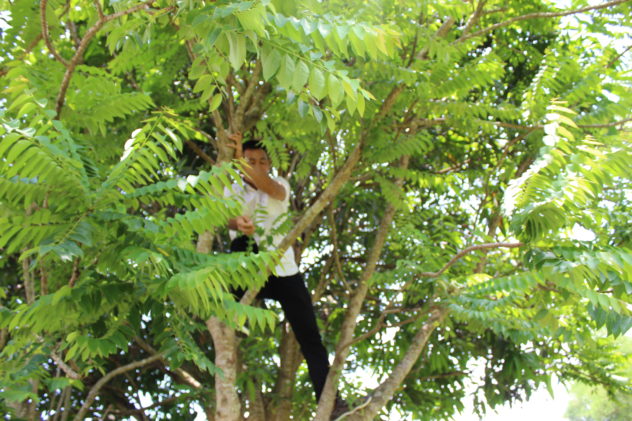
Two minutes later, wandering through the cocoa trees, you hear the thump of a cashew fruit falling to the ground just meters away. And another, this one just a bit closer. Taste the deep, sweet flavor of a sun-warmed mango you peeled with your own hands; refreshing soursop, a piece hacked off for you after waiting in the fridge for your arrival. The sweat drips down your lower back, but you can't bring yourself to care because the bright smile on your face rivals the sunny weather. Rambutan season was nearly upon us. You won't find any apples or oranges in this tropical paradise, though avocados are plenty.
They should name this farm vui. Because that first sweet taste of cacao reminds you of that first glimpse you had of this place, this paradise, and after that, all you need to do to return is close your eyes.
How to Arrange a Tour
Tours are available by request only, and are not currently offered on a drop-in or regular basis. To inquire about a tour, please visit their website and send and email or call, or inquire at their cafe if you happen to be in town.
Cafe Address: 3 Quang Trung, Buôn Ma Thuột
Cafe Hours: 7:30am-6pm, daily
Azzan Cafe Map
If you found this post interesting, please share it so that others can, too!
Have you ever visited a cocoa plantation?













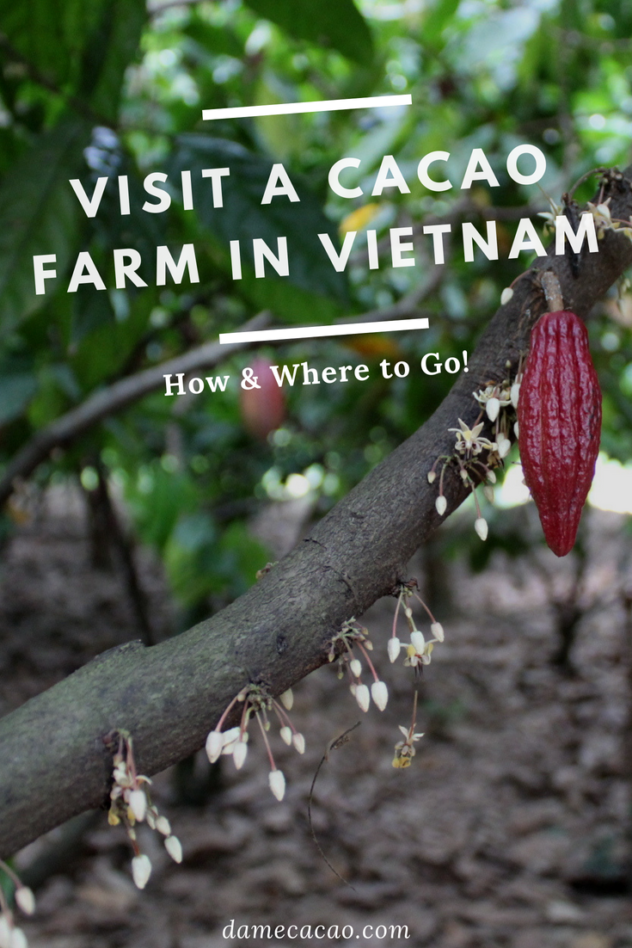
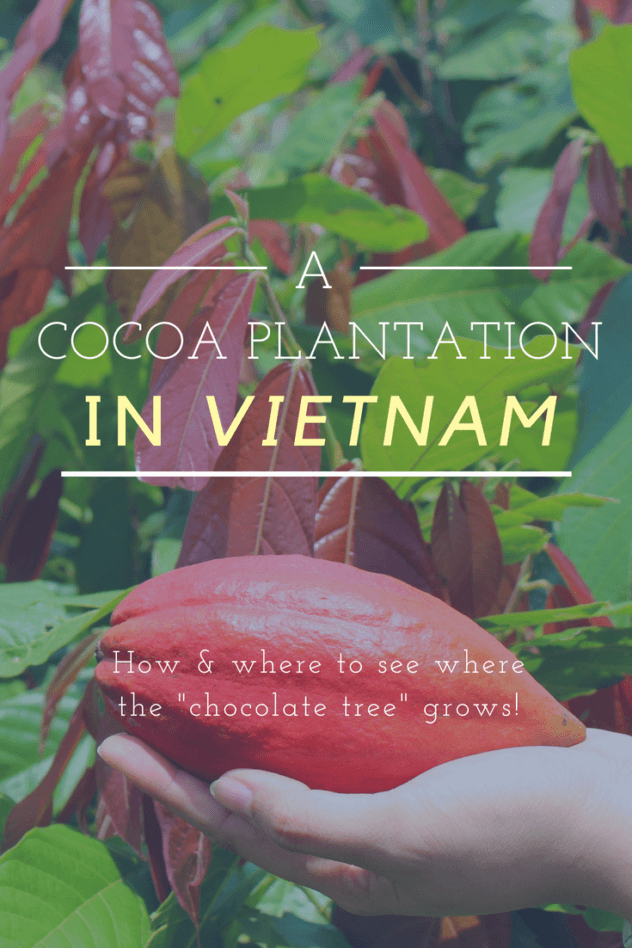
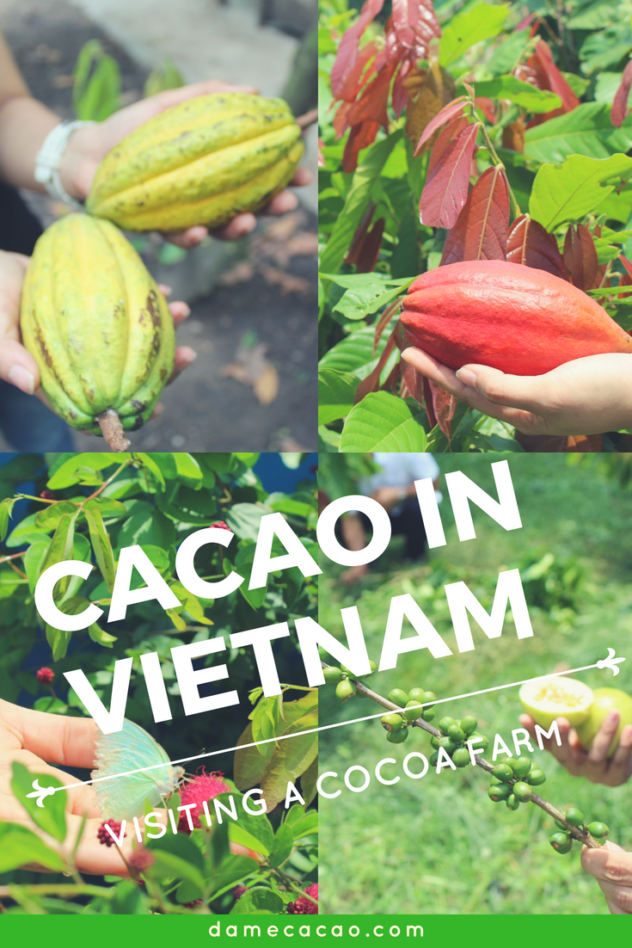




JAY
Is this still an active option to see the farm?
All posts are rather dated .
Plan to go Feb 23 -24 or so.
Please let me know.
Jay
Max
I'm honestly not sure, Jay, but as I mention at the bottom of the post, if you want to arrange a tour, I would reach out to them via their cafe's social media or the email on the website. Both are still active.
Either way, I hope you enjoy your time in Vietnam!
Myrvin Garnett
Fantastic write up, I do understand the movement towards a more sustainable farm model in Vietnam, but reminding people that the difficulty is to come.
As a retired American with a 20 acres cacao farm in the Dominican Republic, it is a labor of love ... Especially when the society is moving towards a more middle class development model.
As with my experiences and those of other fellows, I am left to wonder if growing cacao is meant solely for societies indigenous because the cost structure to produce this crop is definitely for the value added merchants.
Thanks
Max
Thanks, Myrvin! It's very true that as the middle class increases proportionally in developing nations, cacao will become a less & less popular option for those with land. I hope there will be more value-added businesses developing in countries of origin, but for now, that avenue is also oriented toward more export or continued low margins, at least until the middle class becomes stable. But with an impeding recession, I'm worried about survival of the businesses already in existence. :/
Teresa
Hi ,leaving the US in 2 weeks.
Arriving in danang.
How far is the cocoa plantation from there?
Teresa
Max
From Da Nang? Maybe 1-1.5 hours flight, arriving at Buon Ma Thuot airport. Another 45 minutes or so from there.
Jewel Ahmed
It’s a very helpful with us. Thanks for the information!!
Max
Glad to be of help! 🙂
Lam
Hi, Max
Super awesome post for the cocoa plantation in Vietnam.
I will be visit Vietnam on coming April. Together with 3 of my friends, actually all the pastry chef.
We are very interested on the tour of cocoa plantation.
Would be great if you can share us some information or the contact of the local tour.
Thank you very much.
Lam
Max
Hi, Lam!
I recommend you & your friends and anyone else interested in touring Azzan reach out to them via Instagram or their website, which is linked in the article. Cacaoken is another chocolate maker who may be able to show you around their farm.
Good luck in your search & happy travels!~
Max